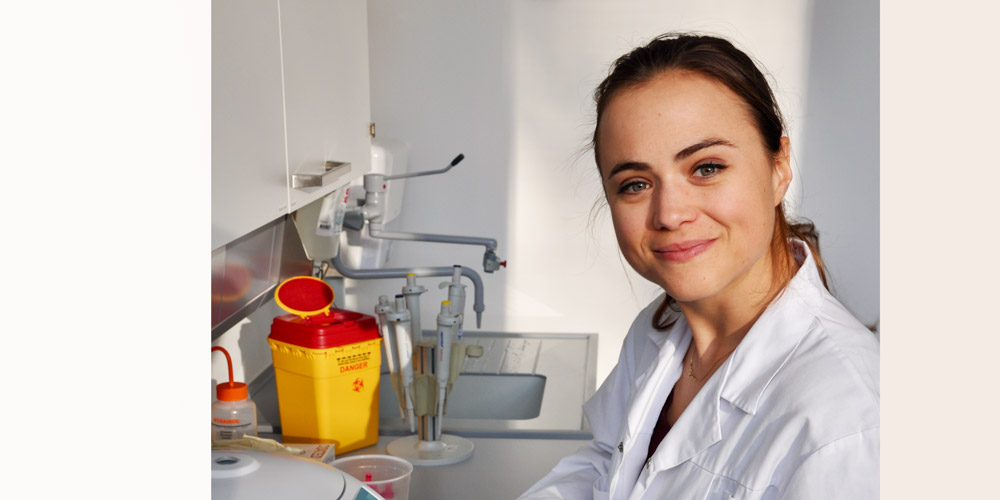Halfway between cell biology and patient care

Zoé Schilliger was one of the three 2019 winners of the Synapsy clinician-researcher grant. She is embarking on a PhD on anxiety that is based on the expertise of two Synapsy work packages. It is a fascinating project that combines Zoé’s shared interest in practical psychiatry and fundamental research.
What prompted you to push open the door to the world of medical research?
I was tempted by architecture at first, but it wasn’t right for me. The theory and aesthetic side interested me, but I found the frantic pace of the projects a bit meaningless. Then I went into medicine because of my interest in health and human physiology. When I discovered cell biology in the first year, it was a revelation for me in terms of the fundamental side of things! When I did my clinical internships, I discovered a certain pleasure in interacting with patients. So, my interest is now a balance between research and clinical work.
Why did you choose psychiatry in particular?
Psychiatry is a specific discipline of medicine where having a well-developed clinical sense is crucial. What’s more, the interactions with patients mean you do a lot of soul-searching. Last of all, psychiatry is an evolving field — all of which means you can be sure you’ll never be bored, and that’s what appealed to me.
What are you studying for your thesis?
I’m studying the biological foundations of anxiety and how it could represent a marker of vulnerability for the development of psychiatric disorders in adolescence. My work is supervised by Paul Klauser and Daniella Dwir, and is directed by Kim Do and Philippe Conus at CHUV’s Centre for Psychiatric Neurosciences. The aim is to identify early changes in the brain that indicate a vulnerability to stress in anxious adolescents, as well as blood biomarkers reflecting these changes. My project is partly based on the clinical data gathered by the Mindfulteen study (read the related highlight “Anti-stress meditation”). The idea is also to make the link with the work of Do and Conus showing that an interaction between oxidative stress and neuroinflammation underlies the alteration of the parvalbumin (PV) interneurons in schizophrenia. We’re investigating whether a similar mechanism is involved in the alteration of the PV interneurons observed as a result of stress in adolescents. In practical terms, I take peripheral mononuclear cells from the blood of patients in the Mindfulteen cohort to test the redox and inflammation regulation systems.
Do you also work with Carmen Sandi’s group at EPFL?
Yes, her laboratory has an excellent animal model for studying the inter-individual differences in vulnerability to stress (read Silvia Monari’s portrait): strains of rats selected for their glucocorticoid secretion levels in response to stress. The idea is to investigate whether these strains have differences in PV interneurons in the prefrontal and limbic regions, both of which are involved in regulating emotions and which change a great deal during adolescence.
How do you manage the clinical work and research?
I do part-time clinical work in the CHUV Outpatient Addiction Department. Fortunately, I can rely on the Synapsy grant for my salary as a researcher. It’s great to be able to get to the bottom of the basic mechanistic complexity and go back to the patient. What’s more, the environment in Lausanne is very open to implementing discoveries from neuroscience.
